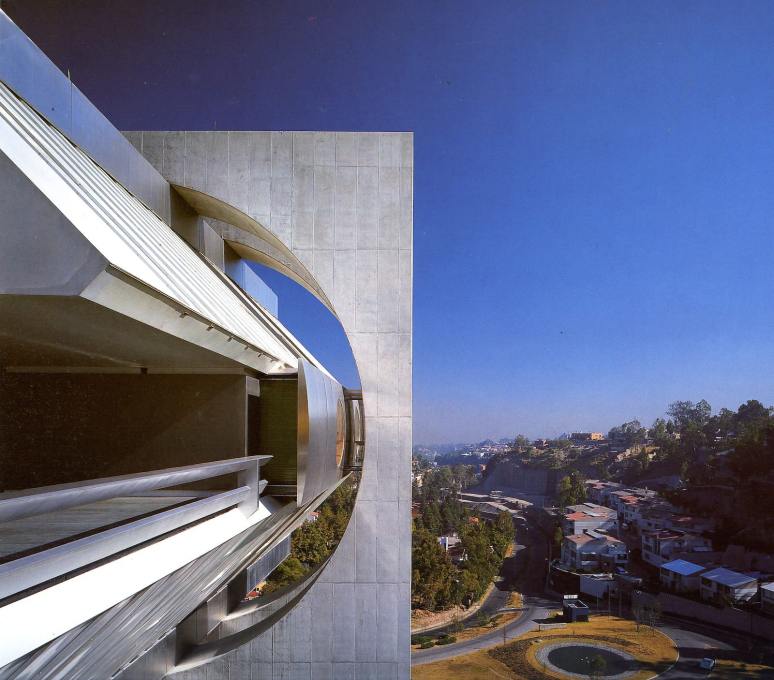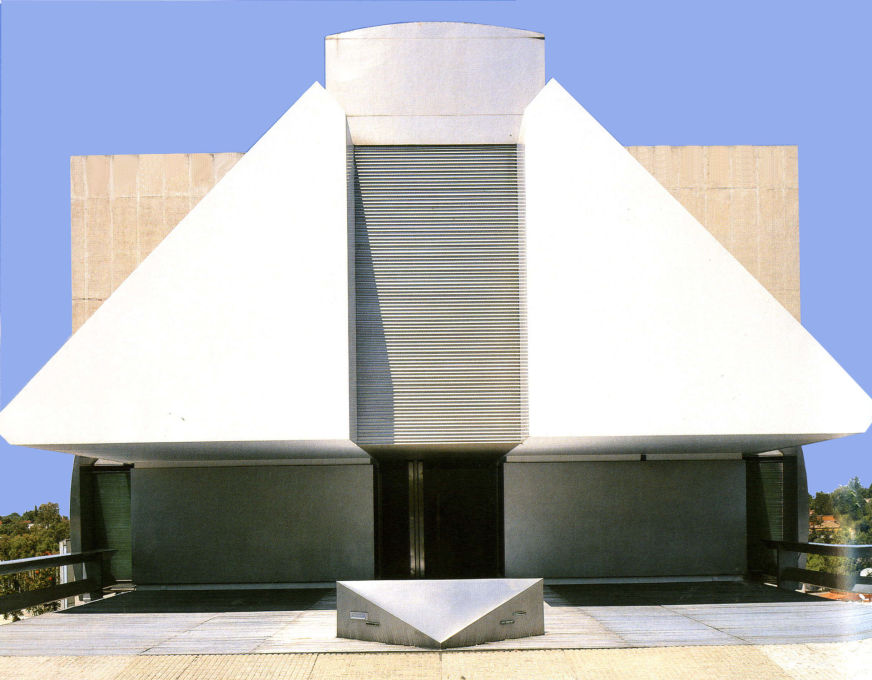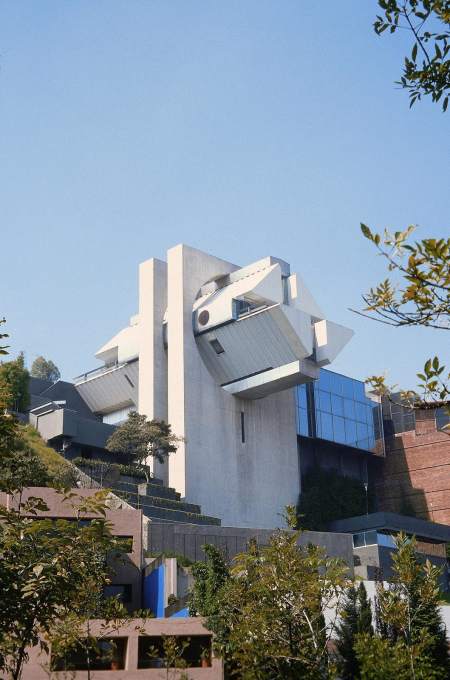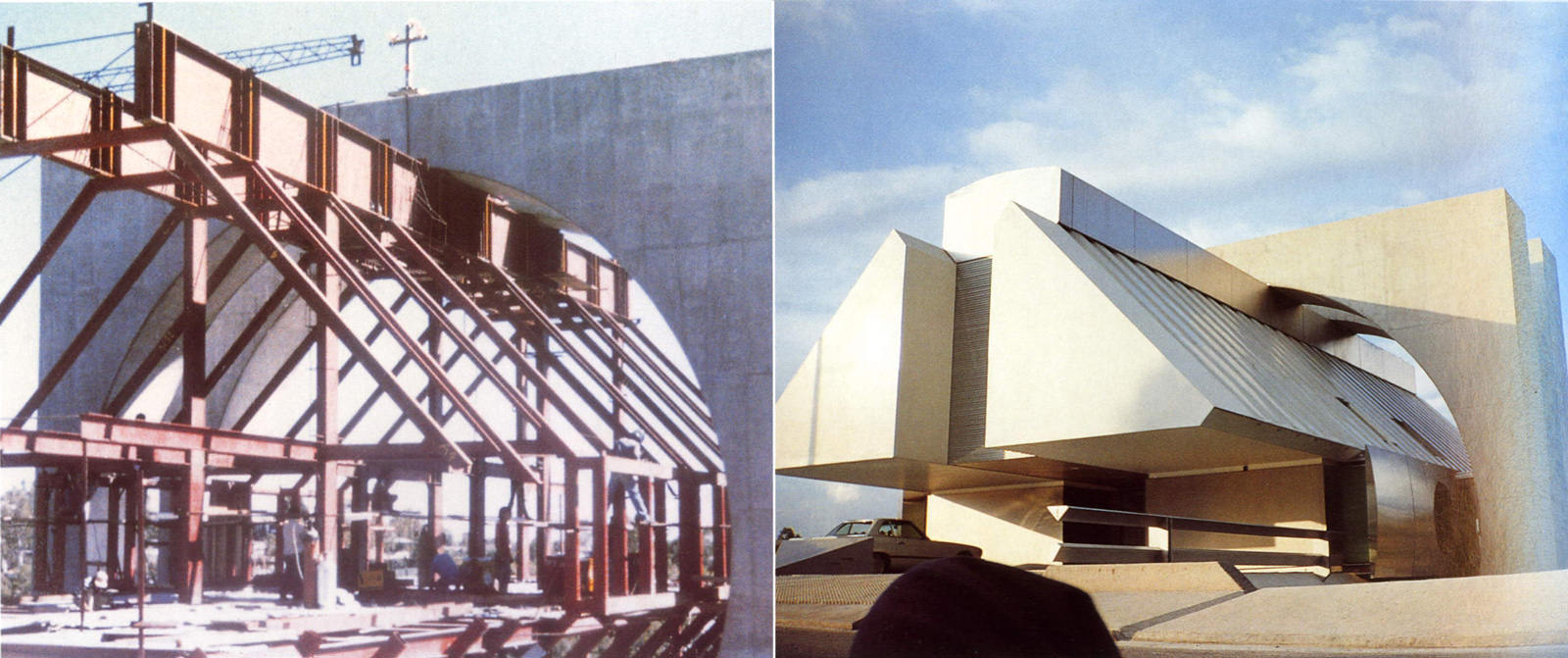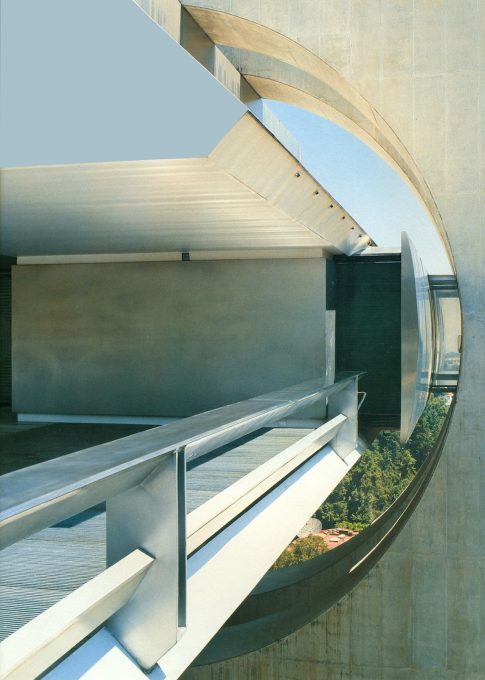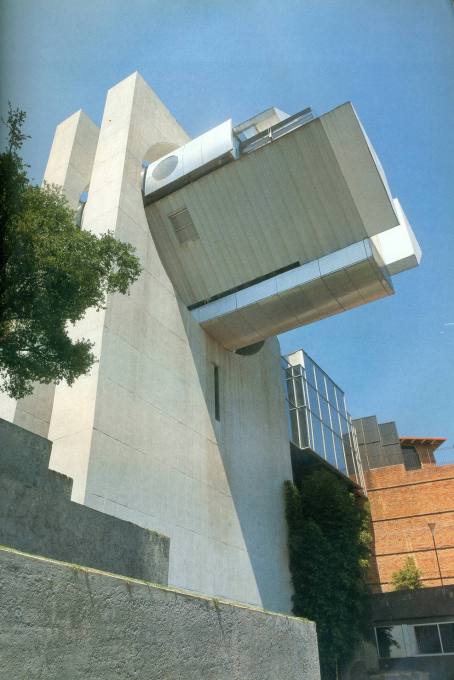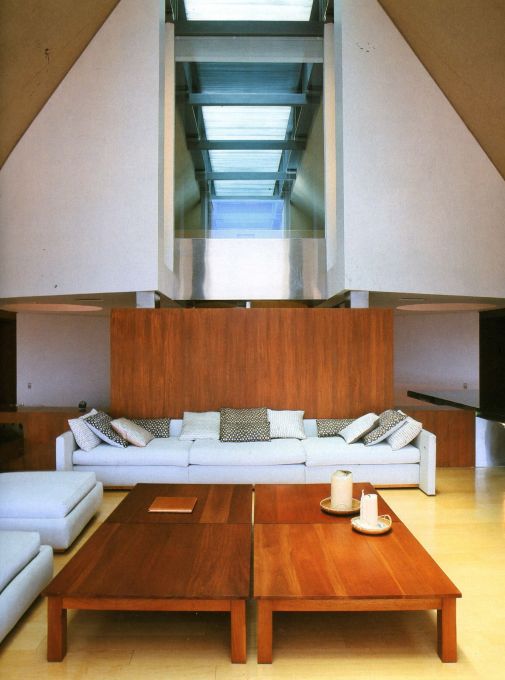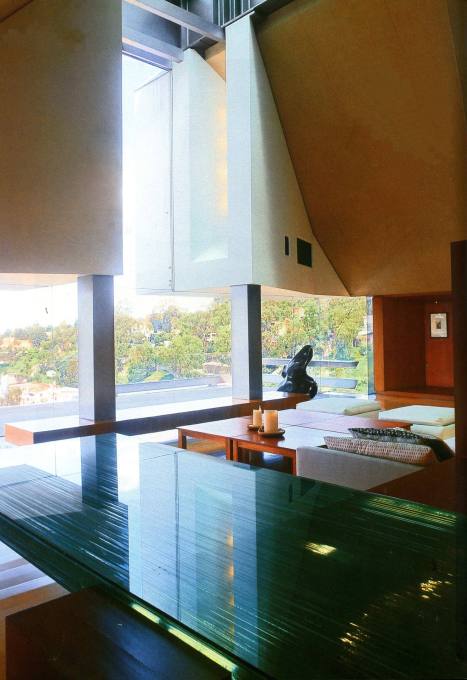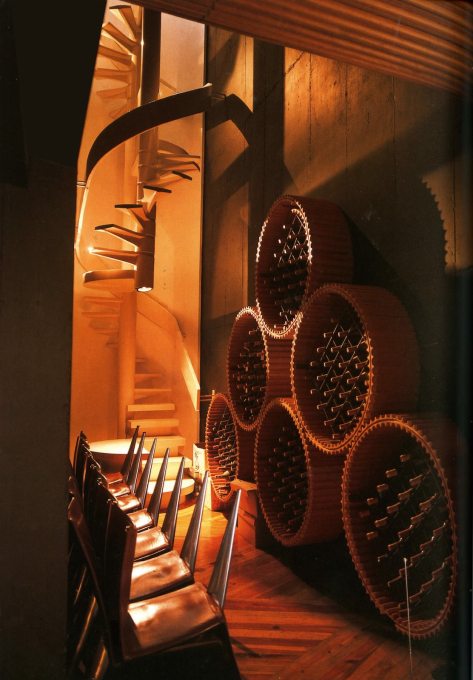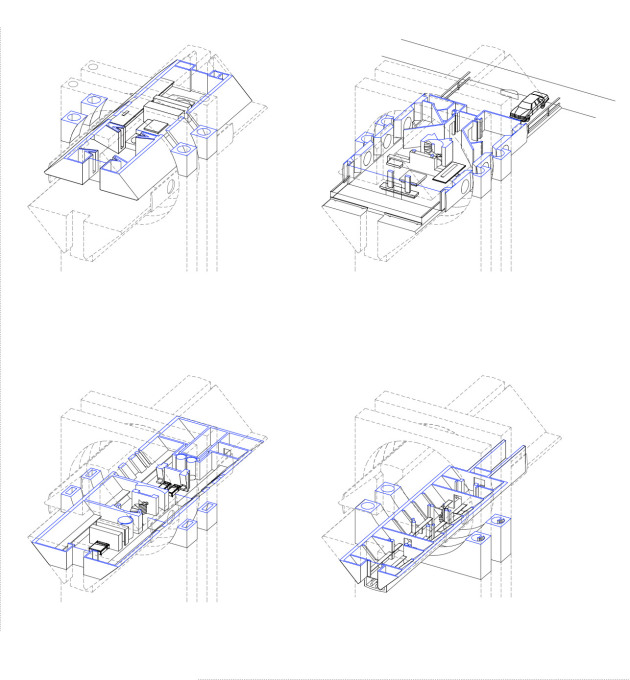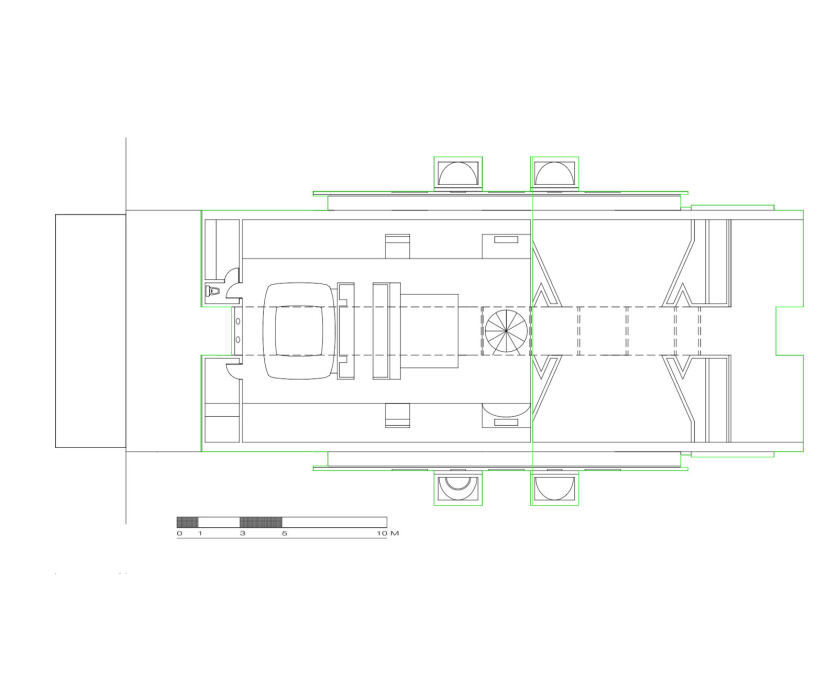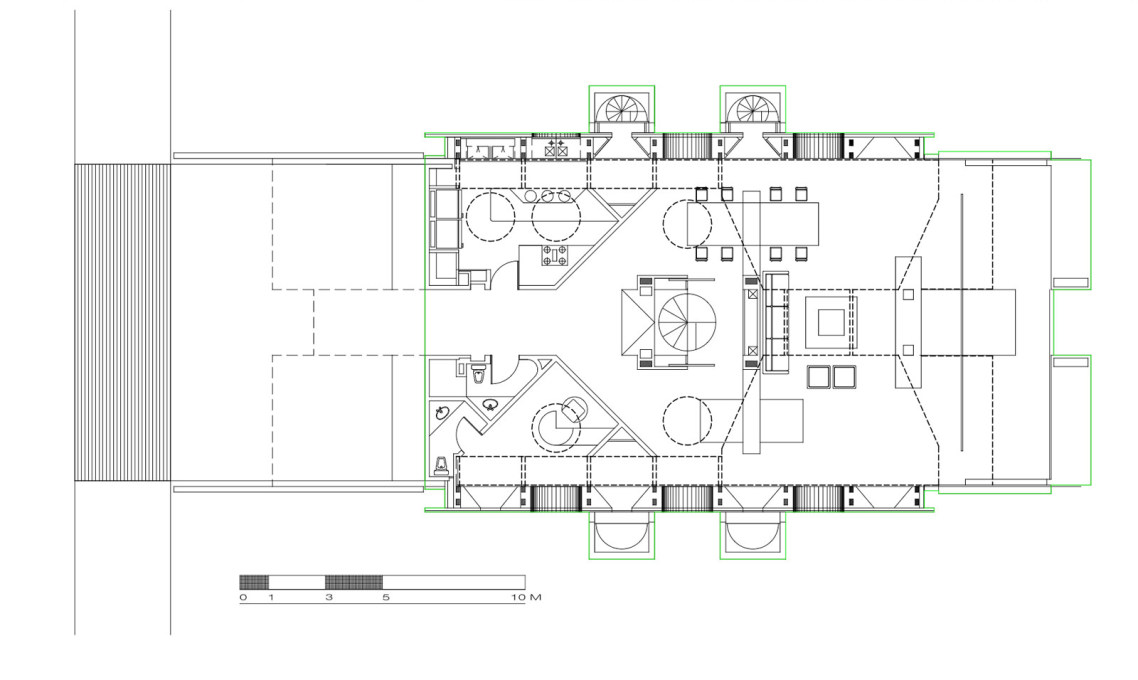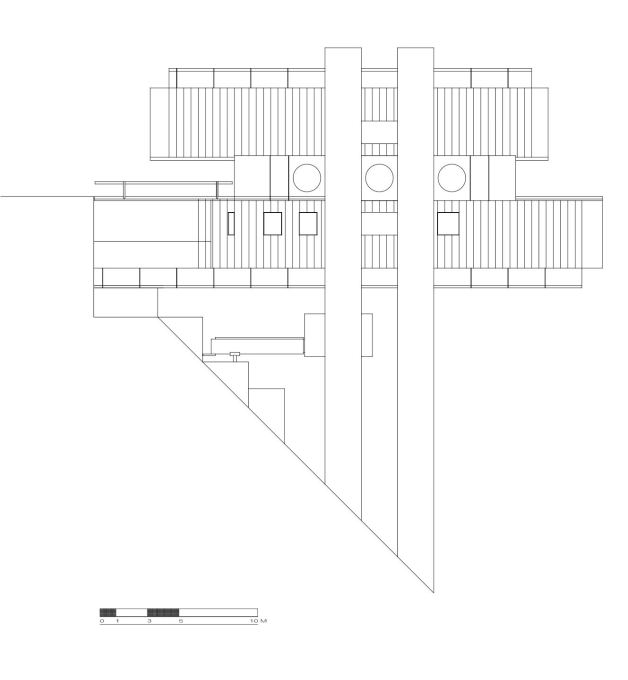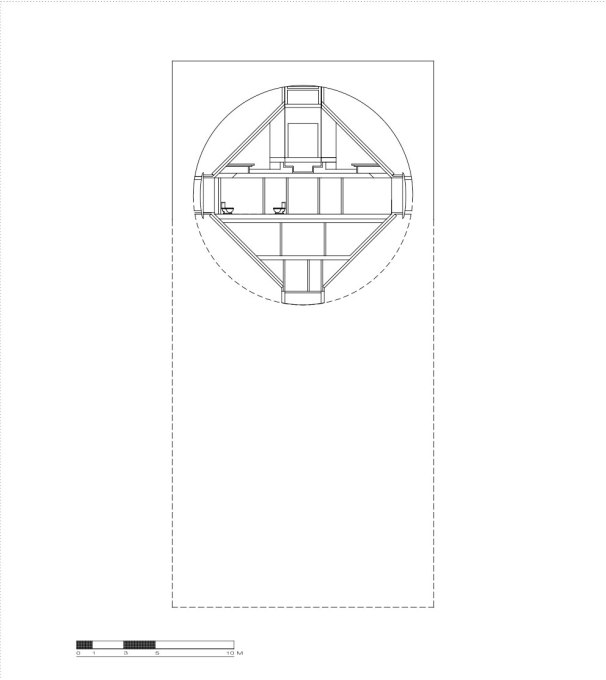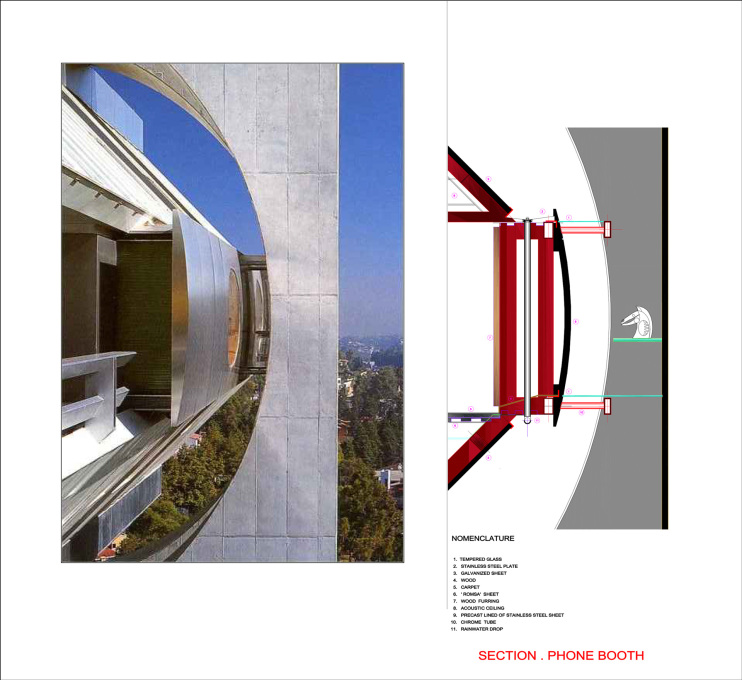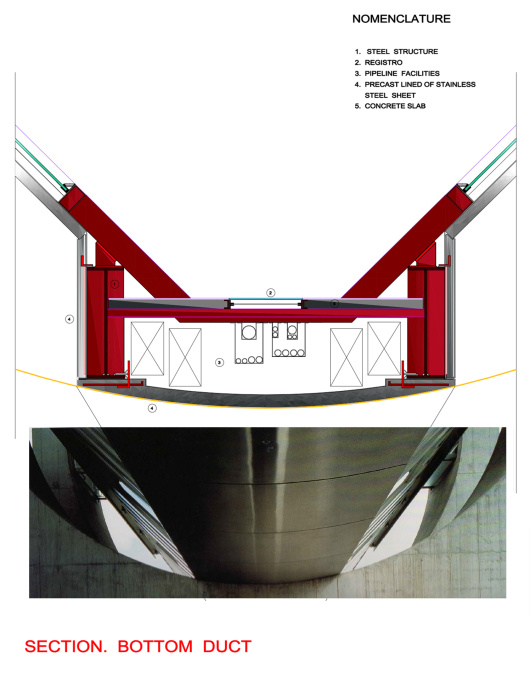The House in the Air (Casa en el aire), built in 1990, looks like a giant ship sailing out from a futuristic port in the sky. Carlos Noriega Jiménez visited the house for uncube and interviewed its architect, Agustín Hernández, at his striking office-cum-home practice, about the background to the project and its design.
Located in the residential area of Bosques de las Lomas in Mexico City, a forty-five degree slope leads up a quiet tree-lined avenue, to where two concrete slabs rise to heaven, like the gates of a dam, with a large circular opening piercing them through. From the centre of this emerges a steel cantilever, composed of four fused triangular shapes, like the keel of a boat.
“This is how materials should work: steel in tension and concrete in compression”. says Agustín Hernández, adding that to form the hipped roof of the cantilever “Everything was modulor and constructed out of prefabricated steel rings”. This meant that even the slightest deviation in measurement or detailing would have had a domino effect, affecting the proportions of the whole monumental composition.
In earlier design phases, the composition was originally conceived as a series of square elements “but they created too many gaps and spaces that did not correspond to the programme. So I decided to rotate the cantilever forty-five degrees, so that the garage and all services could be accommodated and allow a smaller space for service ducts in the “keel” underneath. So the ducts are at the bottom, with the services above, then the laundry, bedrooms, living room, and mezzanine”.
“Inside the main interior space is double height, illuminated by a skylight at the apex, gives you an atmosphere of sheltering under two sloping roofs, just like in traditional houses”.
On completion, the work caused huge comment, with people interpretating the vast structure with its strange geometry of multiple triangular volumes, as anything from a clock to a futuristic bridge.
Starting off with a strong formal concept has always been a very important element in the architectural work of Agustín Hernández. For instance in his celebrated early project, Military College (Heroico Colegio Militar, 1976), the key design idea was inspired by the pre-Columbian city of Teotihuacán. Also marked by this search for ancient Mexican roots, another project, the Meditation Centre of Cuernavaca, (Centro de Meditación, 1984), has a shape inspired by the head of the Quetzalcoatl, the feathered serpent deity of the Aztecs. But the House in the Air is not based on any Pre-Columbian symbolism, but instead plays a different, geometric game, defying gravity:
“It is called a House in the Air, because it is the about use of air, of space, not the soil. Its garden is the air and the landscape of the mountains beyond, of the horizon”.
Another important feature of his work is what Hernández defines as “character” the architectural identity of each work, which each work represents. When asked about how that definition applies to the House in the Air, a work that seems anything but a house, Hernández says laughing, “it's out of the ordinary in terms of the common concept of a house. But a few clients like to skip the traditional.”
– Carlos Noriega Jiménez is a writer and editor. He works as Editorial Coordinator of Domus Mexico magazine.
The House in the Air, Heroic Military College and Praxis will all be included in the forthcoming exhibition Latin America in Construction: Architecture 1955–1980, at the MoMA in New York, March 29 to July 12, 2015.
Now read uncube issue No. 23: Mexico City




